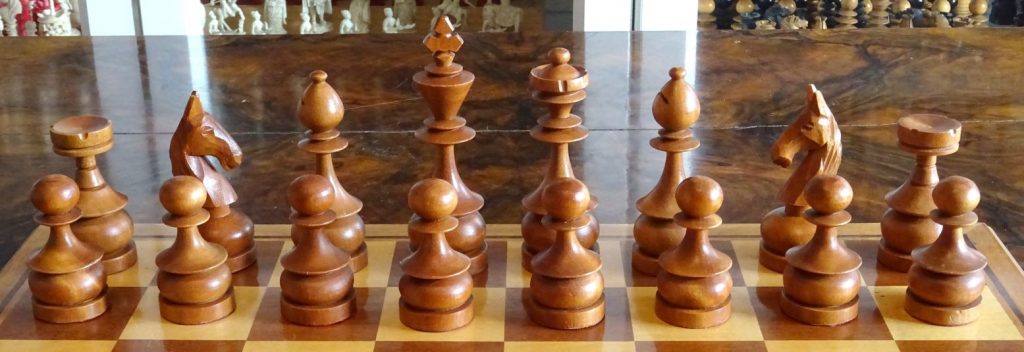
Recently, I had a discussion with Davide Nastasio regarding Philippine Staunton chess sets. He bought a reproduction of such a set produced by the Indian manufacturer Chessbazaar. I was aware that Chessbazaar was selling sets in this pattern. But I have to admit that I never really cared for more detail. When Davide mentioned the purchase, I did take a closer look. And I have to admit that I was slightly shocked.
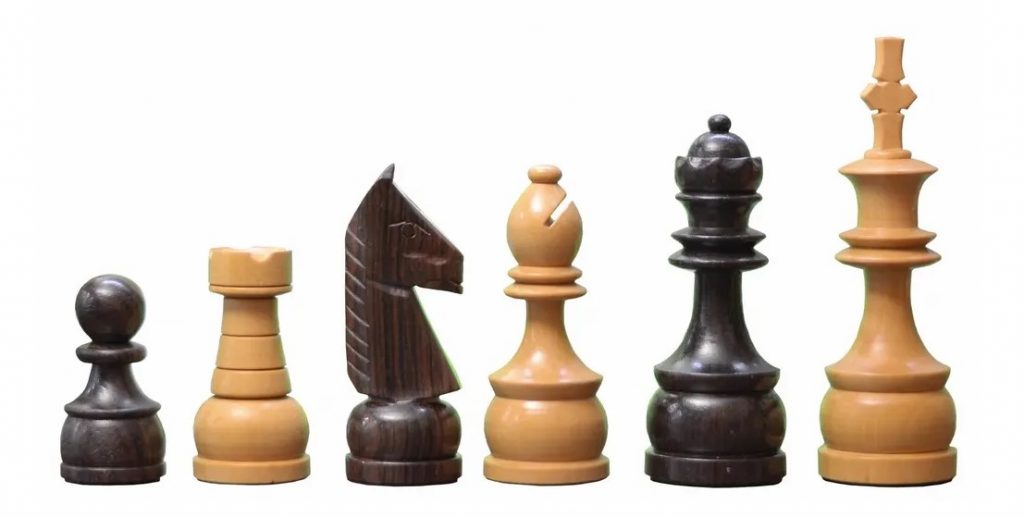
I know the people from Chessbazaar and have bought several chess sets from them myself. Their overall quality is good. But their greatest weakness is perhaps the accuracy of their reproductions when compared to the originals. And their Philippine Staunton set is perhaps the worst in terms of accuracy. I might even go as far as saying, it is not even close.
However, it is not for me to blame Davide or even Chessbazaar for not knowing better. So rather than blaming, I thought it would be a good lesson to learn if I explained in more detail why I think the original Philippine Staunton sets are way better than the reproduction.
Some words about Philippine Staunton sets in general
Before I continue comparing original and copy in more detail, I would like to start with a few words about Philippine Staunton sets in general and why I feel the need to write about them. My interest in chess sets from the Philippines has a very personal background. After my university studies I spent some time in the Philippines working for the German Embassy in Manila as part of my legal training. It was at that time when I met my later (and in the meantime former) wife. My stepson is of Filipino descent, my youngest son is half-Filipino. I started collecting chess sets from the Philippines as part of their cultural heritage. And chess sets from the Philippines are clearly more than just Staunton. I show a variety of sets on my website. Anyhow, I think that the Philippine Staunton pattern is one of the most attractive Staunton variations.
Jim Joannou wrote an interesting article on chess sets from the Philippines published in The Chess Collector Vol. XVII no. 3-2008, p. 12 et seq., in which he also described design particularities of the Philippine Staunton pattern. He wrote:
“The design of modern playing sets in the Philippines, are based on the Staunton pattern, but with some notable differences. The Rooks generally have flat tops although some sets show small castellations. The knights, depicted as a horse, have long noses and “sticky up” ears. Some knights can be quite crudely carved. The King, Queen and Bishop have slender tapering stems and the crown on the king can be described as a “Catholic Rosary Cross”. The bases of all the pieces tend to be quite “chunky”, which gives stability. Some modern sets can be quite crudely made, however sets from the early to mid 20th C are of a higher quality and can be quite collectable, although only rarely come up for sale.”
The comparison
Now let us take a look at some of those sets in more detail. I have the advantage of having several in my collection, which all differ slightly in their design. Hence, I am able to cover a rather broad range of Philippine Staunton sets. Despite the design variation within these sets you will see that they still have more in common with each other than the copy has with either of the originals.
The King
Let us start with the king. Jim Joannou described them to have slender tapering stems and topped with a crown, which he described as “Catholic Rosary Cross”. The latter is important, because it is a typical feature of the Philippine Staunton pattern. It relates to the fact that the Philippines were conquered by the Spanish in the 16th century and named after the later king Philipp II. of Spain. The Spanish brought Catholicism, which until today is the dominating denomination. More than 80 per cent of the people are of catholic denomination, followed by roughly 5 per cent muslims. This dominance of the catholic church is beautifully shown by the oversized crosses on the Philippine Staunton kings.
However, when compared to the reproduction, this dominance is clearly lost. The cross is tall, no doubt. But it is entirely out of shape and looks like a foreign object on top of the king. Further, in the original sets the kings’ head is always an inverted cone with straight sides, while the head of the reproduction rises as a perpendicular cylinder, which opens into a slight outward curve on the top.
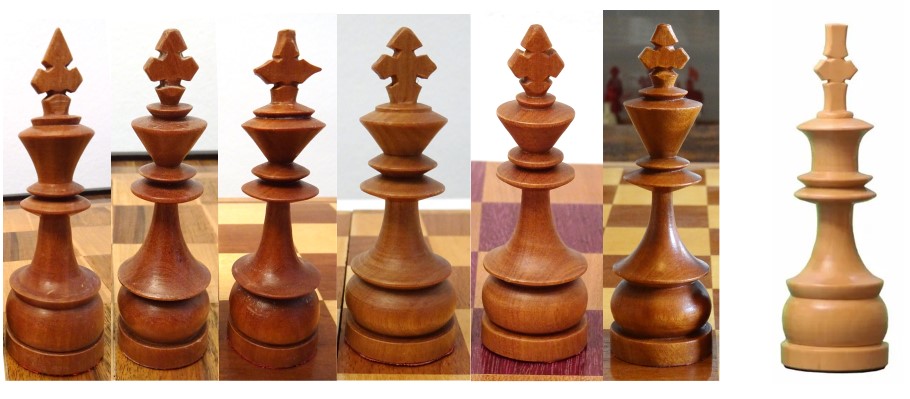

The Queen
The queen in the originals has two collars on top of the stem, the lower of which is significantly wider than the upper one. Above them the queens’ head is topped by a coronet, which is only indicated by small dentures in the wood. The crown itself is wider or at least as wide as the larger of the two collars. When compared to the original one can see the significant deviations. Firstly, the size difference between the collars was neglected. And secondly, the head is by far too slim thus giving an entirely different impression.
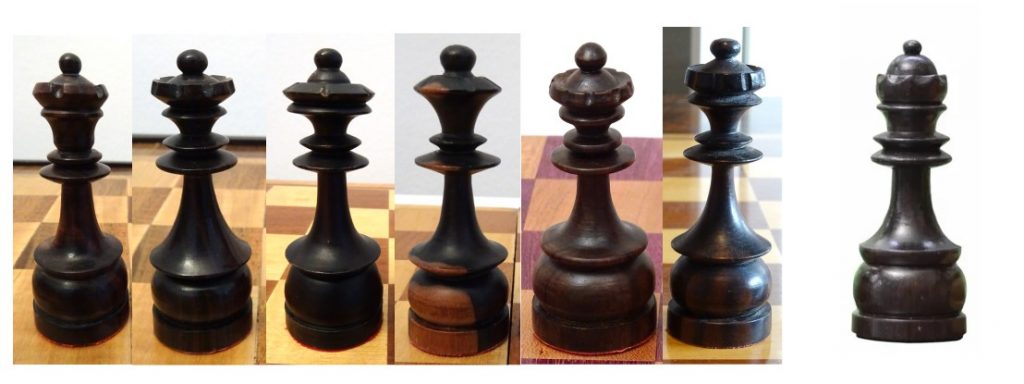
The Rook
The rooks and bishops are probably the pieces closest to the originals. The rooks in the originals come in different styles. Most of the rooks have tapering stems, but there are rooks with straight stems as well. The main difference between the rooks in the original sets and the rooks in the reproduction are the tops. While Jim Joannou described the original rook design as “flat tops with small castellation”, the rooks’ top in the reproduction is rather massive instead of flat. But the deviation is not as obvious as in the other pieces.

The Bishop
As for the bishops, they are also rather close to the original. I can spot two main deviations. Firstly, the collars below the head are, again, of different diameter in the original (following the king and the queen), i.e. a wider lower collar and a narrower upper collar. In contrast the collars in the reproduction are of almost similar diameter, thus giving a different impression. Secondly, the head of the bishops is more pointed in the originals giving the bishops a more elegant appearance.
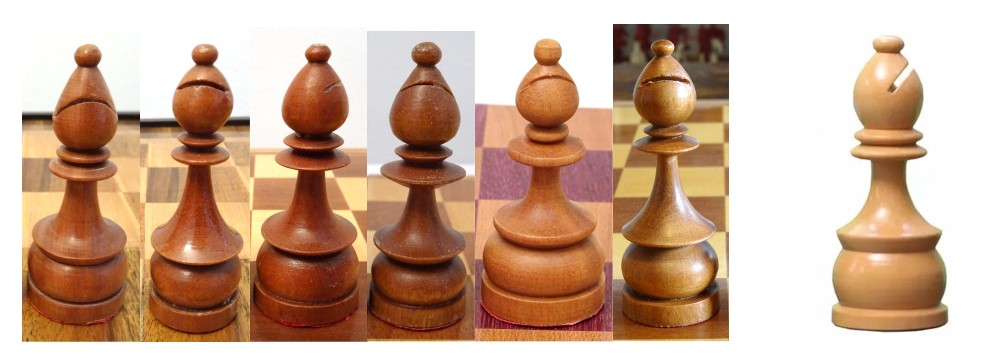
The Knight
The biggest difference can be seen when comparing the knights. According to Jim Joannou, the characteristic of the Filipino knights are the pointed nose and the ears sticking up. The nose of the knights can even be so pointed that they resemble a mule more than a horse. Even though crude carvings are typical for Filipino knights, the difference in carving between the originals and the reproduction is obvious. While the originals have rounded, natural shapes, the reproduction comes in an extremely angular design with straight cuts, which hardly resembles the original.

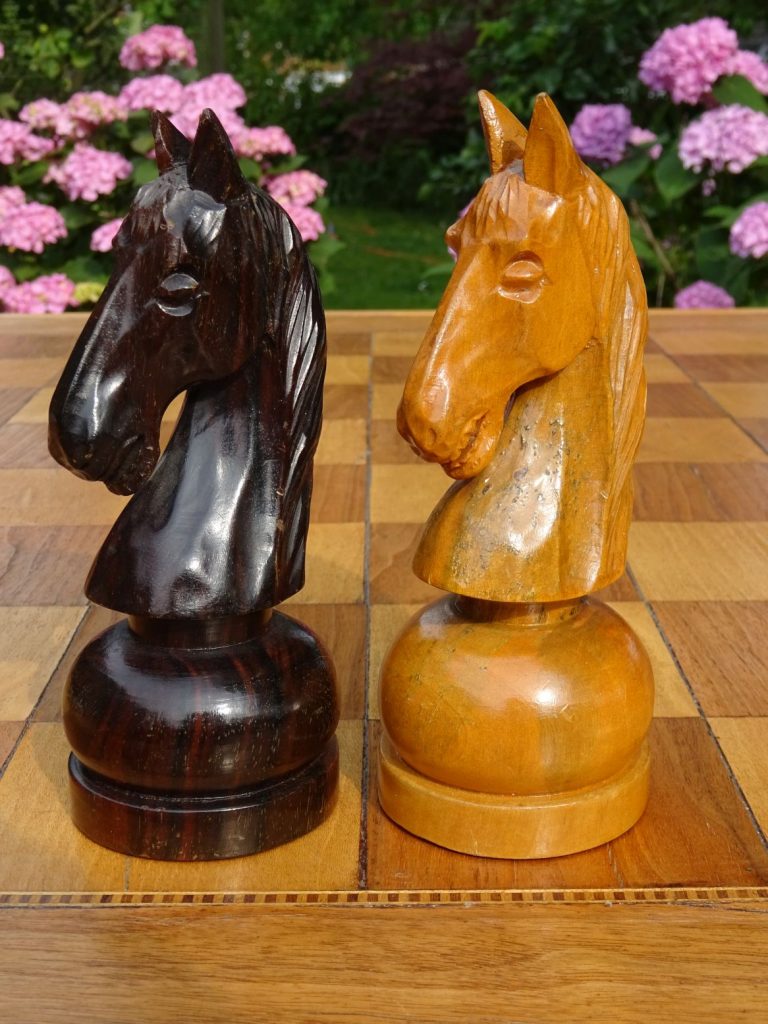
The Pawn
Last not least, the pawns are not too far off, even though the bottom rings are far too small in the reproduction. Further, and this is a deviation in all pieces, the bases in the reproduction are not true to the bulbous bases in the originals in that they end in an almost vertical line at the bottom, while the originals are bent inwards thus giving the impression of a much more rounded shape.

The Material
A further difference between the original and the reproduction are the materials of which the pieces are made. Chessbazaar’s reproduction is made of boxwood (white) and rosewood (black), while the originals are made of narra (white) and kamagong (black).
In particular the kamagong wood makes a big difference. Even though rosewood is a wonderful wood with a beautiful grain, it can hardly be compared to kamagong, which belongs to the so called coloured ebony woods. The tree is also known as mabolo in the Philippines, which is the local name of the tree’s fruit (the English term for which is “velvet apple”). As a wood type from the ebony family, kamagong is extremely hard and dense. This is the reason why it is also known under the name “ironwood”. Its colour is dark brown, but it can have a very lively orange-reddish grain, which makes it extremely attractive and special.
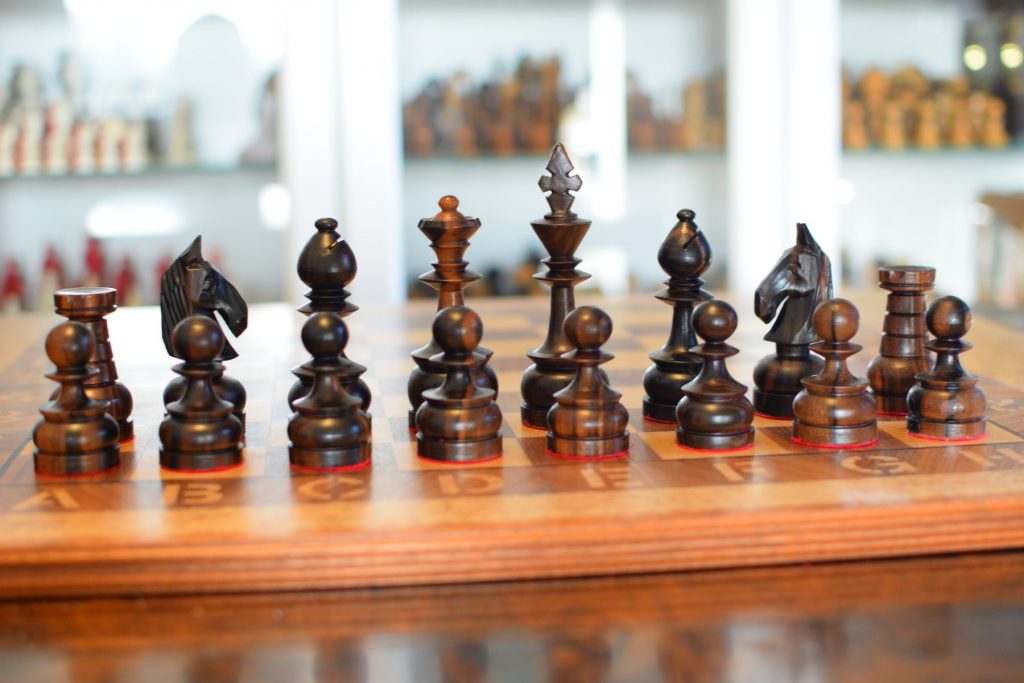
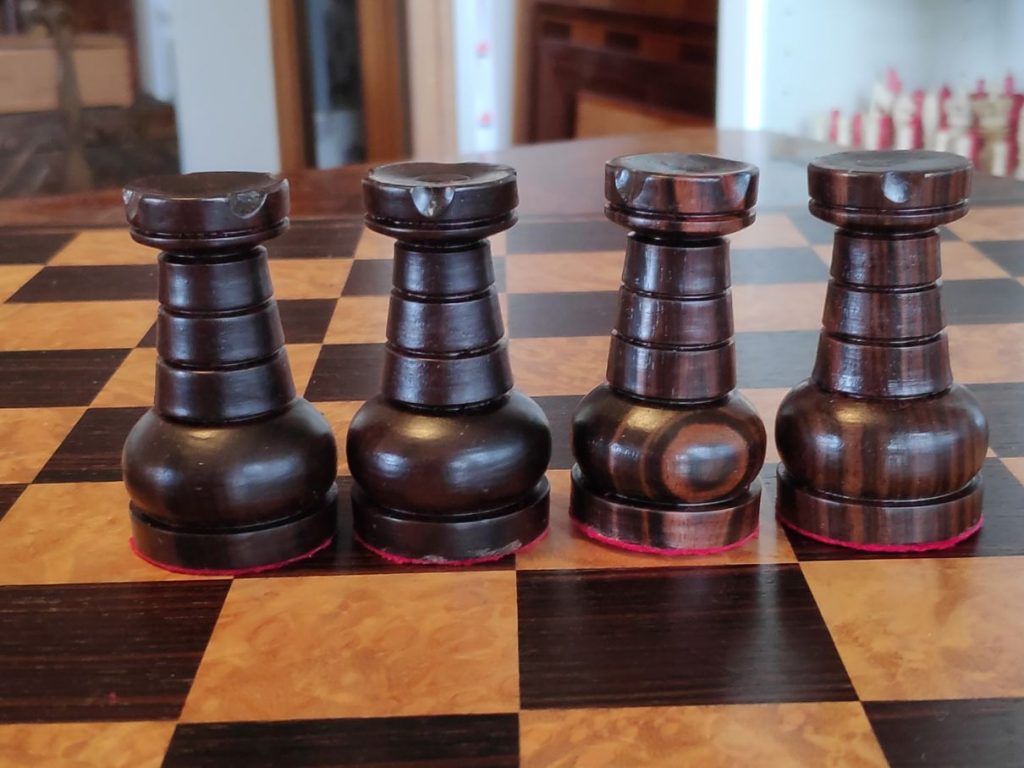
While Chessbazaar is clearly responsible for their design deficiencies, the difference in the material is not their fault. Both, narra and kamagong are woods from the Philippines, which are under protection since the 1980’s. Harvesting and export of these timbers are strictly supervised by the government and require special licenses. The result is that chess pieces made of kamagong are hardly available nowadays, which is why Jim Joannou mentioned in his article that “they can be quite collectable, although only rarely come up for sale.”
Philippine Staunton sets for sale
This, however, is not entirely true, because – if so much self-advertising were allowed – I am offering original chess pieces in kamagong and narra in vintage new condition for sale for as little as 80 EUR plus shipping. I was able to secure some sets that were manufactured in 1974 and exported to Germany but never went on sale there, remaining unopened until they were rediscovered last year. Here is some more information. Anyone interested in purchasing a set is welcome to contact me at holger.langer@chess-collection.de.
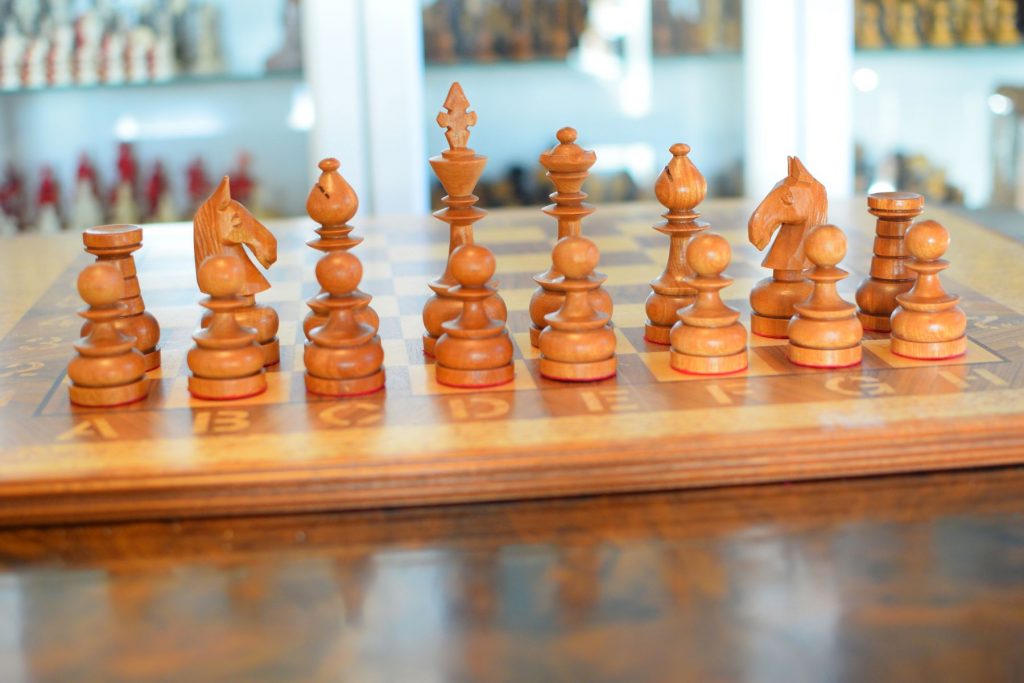

Albert Cadiz
Mark